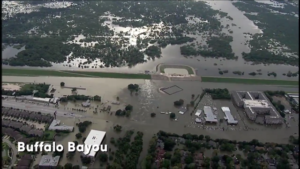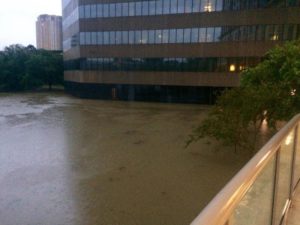 Hurricane Harvey has come and gone, but Houston will be cleaning up the mess for years to come. Harvey, considered an historic hurricane, hit hard and caused flooding that no one has ever seen before. The typical hurricane starts out strong, weakens as it makes landfall, and moves on quickly. But that is not what happened with Harvey. Meteorologist Jonathan Belles with Weather.com summed it up perfectly:
Hurricane Harvey has come and gone, but Houston will be cleaning up the mess for years to come. Harvey, considered an historic hurricane, hit hard and caused flooding that no one has ever seen before. The typical hurricane starts out strong, weakens as it makes landfall, and moves on quickly. But that is not what happened with Harvey. Meteorologist Jonathan Belles with Weather.com summed it up perfectly:
“Meteorologically, southeast Texas, at the time, was pretty much a giant stop sign. There were two high pressure systems that wouldn’t let Harvey move in any direction. So for three or four days, Harvey pretty much sat there and dumped rain.”
The total amount of rainfall has been measured at 51.88 inches, which is a record amount in the United States. That amount of rainfall caused catastrophic flooding to roads, homes, and businesses in and around the Houston area.
“Hurricane Harvey went over so many areas, it just churned up so much and unfortunately it affected a lot of businesses in the area,” said Jason Husk, COO of Disaster America. “We are having to come in, tear things apart, and put them back together.
“Immediately after Harvey hit, our team got straight to work. We sent out crews to different parts of town and started cleaning out flooded buildings.
 “One particular unit in Southwest Houston got hit pretty hard with water about 6 inches deep,” said Husk. “But by the time we were actually able to gain access to the facility, the water had gone up the sheetrock and was anywhere between 18 inches to 2 feet high. And what you’re left with isn’t good. You’re left with mold growth coming up 6 to 8 inches on the wall until we can get it out of there. You’re left with the stench and odor of mildew.”
“One particular unit in Southwest Houston got hit pretty hard with water about 6 inches deep,” said Husk. “But by the time we were actually able to gain access to the facility, the water had gone up the sheetrock and was anywhere between 18 inches to 2 feet high. And what you’re left with isn’t good. You’re left with mold growth coming up 6 to 8 inches on the wall until we can get it out of there. You’re left with the stench and odor of mildew.”
The longer floodwater sits in a building, the more toxic it becomes. As the water sits, mold and mildew start to grow. Breathing in mold and mildew can cause serious respiratory issues along with many other health problems. Also, the more mold that forms inside the building, the harder the cleanup and restoration process will be. It’s imperative to get the water out of the building as soon as possible, which is why the Disaster America crew got to work as soon as Harvey hit.
Flooding wasn’t the only thing that happened during Harvey. The southwest side of Houston was devastated by a massive sinkhole that was so bad it collapsed the entire road.
Conserve Energy Future says sinkholes “occur due to erosion or underground water. They start developing a long time before they actually appear. The ground beneath our feet is not as much of a solid structure as we think it is. The ground is made from dirt, along with many rocks and minerals. There is water continually seeping in between the mud, rocks and minerals, as it makes its way down to the ground water reservoirs. As this happens, the water slowly erodes the rocks and minerals. Sometimes the flow of water increases to a point when it washes away the underground structure of the land. And when the structure becomes too weak to support the surface of the earth, it collapses and opens up a hole.”
Tornadoes also played a huge role during Harvey. And if you live in or near the Houston area this should come as no surprise, considering the number of warnings that were sent to every cellphone in the area.
According to USTornado.com, “Harvey spawned dozens of tornadoes, including strong tornadoes which are somewhat less common in tropical cyclones than their mid-latitude cousins. Some places were under assault from tornado warnings for days. Those warnings now number past 300.”
The amount of damage caused by Harvey has still yet to be determined. Even now, there are still homes and businesses filled with water. The Disaster America team has been working hard since Harvey hit, and we will not stop until each and every business is put back together again.
